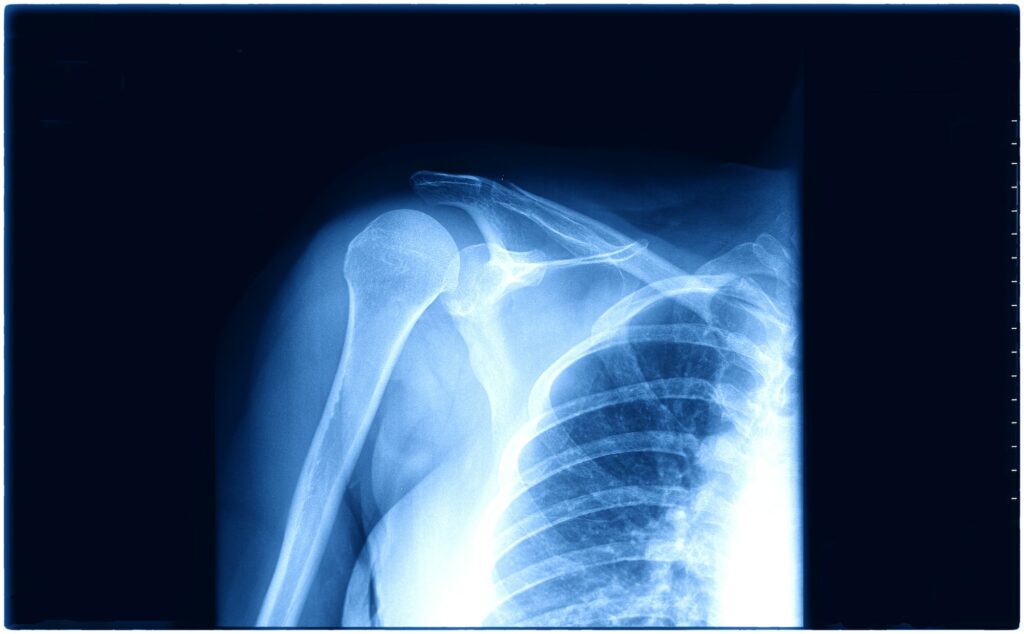Shoulder injuries, particularly fractured shoulders, can be both excruciating and incapacitating. A fractured shoulder is a prevalent injury caused by various factors such as falls, sports incidents, or accidents.
It can be challenging to differentiate between a broken bone and a sprain, potentially leading to delayed treatment and complications. Understanding the symptoms, causes, and treatment options for a fractured shoulder is crucial.
A fractured shoulder denotes a break in one or more of the bones forming the shoulder joint, including the clavicle, scapula, and humerus. When a shoulder bone fractures, it results in intense pain and hindered functionality.
The severity of shoulder fractures can range from minor cracks to complete breaks, often causing limited movement and discomfort. Shoulder fractures can stem from direct shoulder impact, like falls or sports-related injuries, or from repetitive strain and overuse.
Osteoporosis, a condition that weakens bones, can also lead to fractures. Fractured shoulders are relatively common, emphasising the importance of swift diagnosis and appropriate treatment.
Treatment methods can vary depending on the fracture’s severity and might encompass non-surgical techniques such as immobilisation and physical therapy, or surgical interventions like open reduction and internal fixation.

Fractured shoulders present a range of symptoms, varying based on the fracture’s severity and location. Common indicators include:
Seeking medical attention promptly upon experiencing these symptoms is crucial, as only a medical professional can provide an accurate diagnosis and suitable treatment.

Direct impact or trauma to the shoulder region is the primary cause of fractured shoulders. Common culprits include falls, sports injuries, and vehicular accidents. However, underlying bone conditions such as osteoporosis, weakening bones and making them susceptible to fractures, can also contribute. While anyone can sustain a shoulder fracture, certain risk factors heighten the likelihood, such as:
To mitigate fracture risk, maintaining bone health is vital, particularly as we age. This entails sufficient calcium and vitamin D intake, regular exercise, and avoidance of bone-weakening habits like smoking and excessive alcohol consumption.

Upon diagnosis of a fractured shoulder, treatment plans hinge on factors like injury severity, location, overall health, and personal preferences. Choices span non-surgical methods to surgical procedures, sometimes combining multiple approaches.
For milder cases, non-surgical interventions might be recommended to allow natural bone healing. These encompass:
Surgery may be necessary for severe fractures or if non-surgical methods prove inadequate. Surgical options include:
The doctor will discuss each option’s pros and cons, curating a personalised treatment plan catering to individual needs.
Recovery from a fractured shoulder demands patience, commitment, and adherence to medical instructions. While healing times vary based on the fracture’s severity, feeling improvement within weeks to months is typical.

Key facets of recovery include allowing proper bone and tissue healing, usually necessitating a phase of immobilisation (sling or cast). Subsequent phases involve physical therapy to regain strength, flexibility, and range of motion.